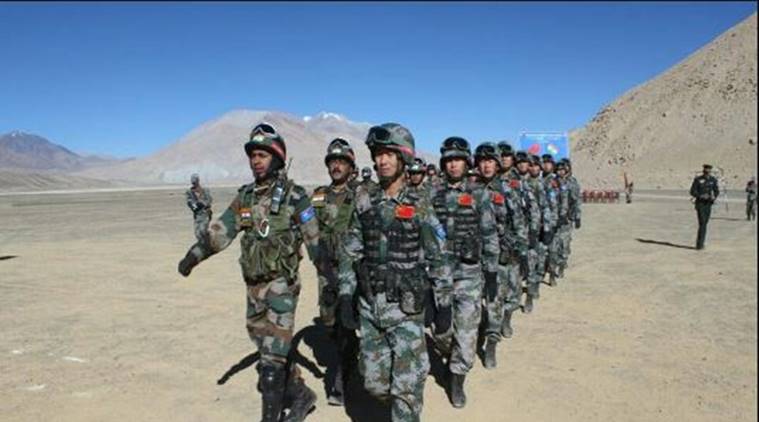
SOURCE: ENS
Although India and China share a boundary that stretches 3,488 km from Ladakh to Arunachal Pradesh, official data show that 80 per cent of Chinese transgressions across the Line of Actual Control (LAC) since 2015 have taken place in four locations, three of them in eastern Ladakh in the western sector.
Along with Pangong Tso, where Indian and Chinese troops came to blows earlier this month, Trig Heights and Burtse have witnessed two-thirds of the total transgressions across the LAC.
New areas of Chinese forays into Indian territory have come up in 2019 — the Doletango area opposite Dumchele suddenly saw 54 Chinese transgressions in 2019, after having recorded only three transgressions in the past four years. In the eastern sector, the highest number of transgressions by the Chinese — 14.5 per cent of the total – was recorded in Dichu Area/Madan Ridge Area. Transgressions recorded in other areas in the eastern sector were very low, including Naku La in Sikkim which saw two Chinese transgressions each in 2018 and 2019. Earlier this month, Naku La too saw a clash between Indian and Chinese soldiers.
The only location in the central sector to record significant Chinese transgressions is Barahoti in Uttarakhand which recorded 21 transgressions in 2019 and 30 in 2018. Least disputed, it is the only sector where both countries have shared maps, presenting their respective perceptions of the LAC.
While Pangong Tso tops the list, the other site of contention in the Galwan river valley had hardly witnessed Chinese transgressions.
According to official data, Pangong Tso, the 135-km long lake, one-third of which is controlled by India, recorded 25 per cent of the total number of Chinese transgressions in the last five years across the LAC.
Trig Heights recorded 22 per cent while Burtse/Depsang Bulge accounted for 19 per cent of all transgressions.
At Pangong Tso, Chinese transgressions almost doubled from a five-year low of 72 in 2018 to 142 in 2019. These transgressions occurred both in the waters of the lake, and its northern banks.
There were 112 transgressions in 2017, the year the two armies were locked in a tense 73-day faceoff at Doklam on the Sikkim-Bhutan border. It was 164 and 77 in 2015 and 2016, respectively.
India and China have different perceptions about the exact location of the LAC in the Pangong Tso area, which results in high number of transgressions.
Incidentally, the site at Galwan river, where tensions have escalated between the two armies, saw only six Chinese transgressions during the same period. While there was no transgression in 2019, four were recorded in 2017, and one each in 2018 and 2016.
Officials suggest that the Galwan river area, a prominent site of action during the 1962 war, is a “settled portion” of the LAC, where both sides agree on its location. So, the current situation in the area is, therefore, a significant departure from the norms of previous disputes on the LAC.
Construction of a new Indian road in the Galwan area, well inside Indian territory, has elicited strong objections from the Chinese who have moved soldiers, heavy vehicles, and monitoring equipment in large numbers. Sources said 70-80 Chinese tents have been pitched in the area, matched by strong Indian mobilisation on the ground.
https://defencenewsofindia.com/chinese-troops-focus-on-4-lac-locations-test-new-areas-in-ladakh/






